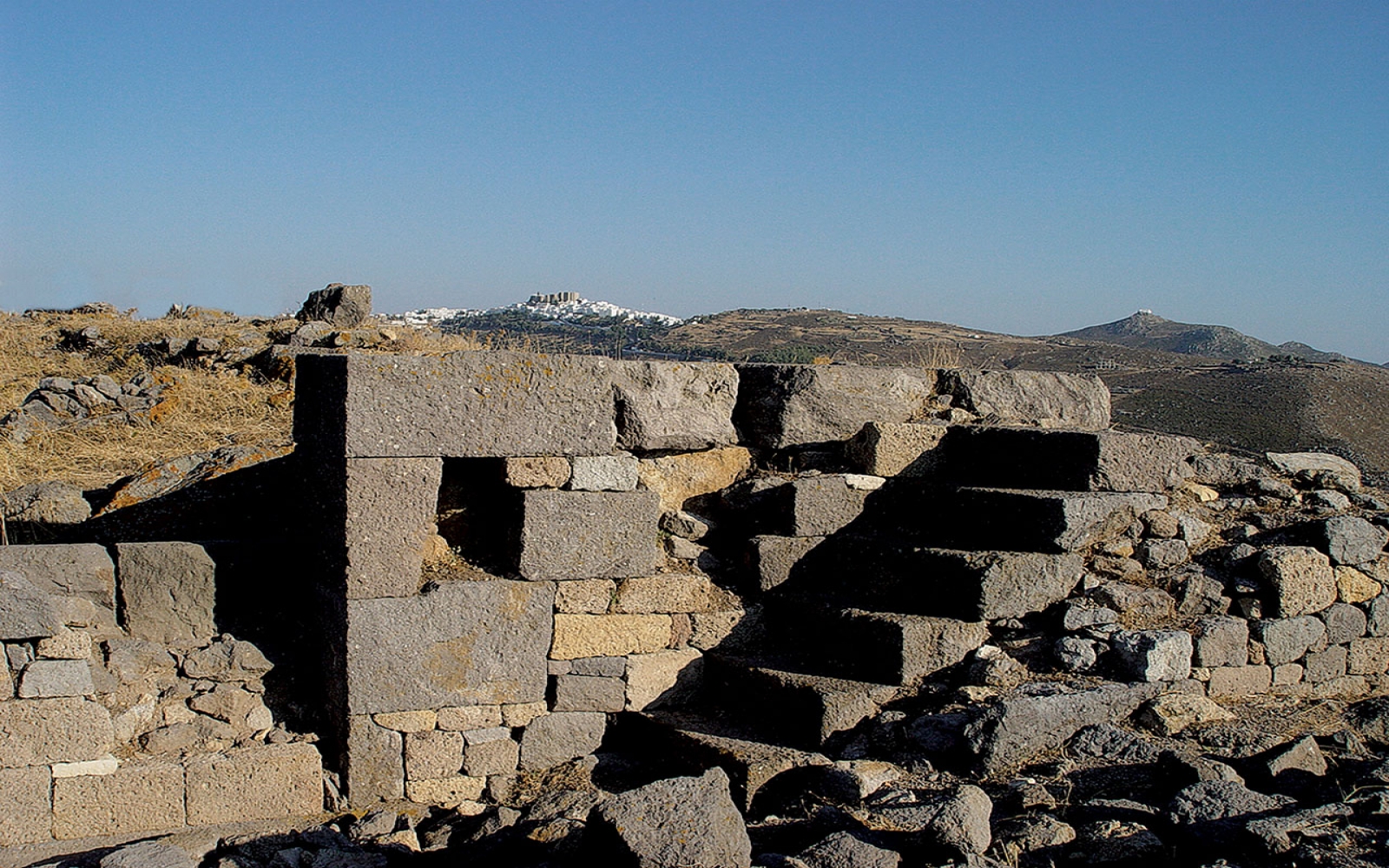Archaeological site of Kastelli
The position of Kastelli is arguably the most important archaeological site of Patmos, where ruins of the ancient acropolis and foundations of the temple of Apollo are saved.
As a naturally fortified hill, Kastelli rises west of Skala and north of Chora and offers clear view of three bays: Skala (to the east), Chochlaka (southwest) and Merika (to the north), while on the horizon there are the islands of Naxos and Ikaria, factors that explain the choice of the ancient inhabitants of the island to build their citadel here.
Superficial sherds and stone tools made of obsidian and flint that were found in the area (and that are exposed in the Mansion Nikolaidis) show that there was already a residential installation from the Bronze Age (1600-1100 BC). At the same time, findings of Geometric, Classical, Hellenistic and Roman times denote the continued use of the hill itself throughout the historical period: 8th century BC – 4th century AD).
Today, impressive remains of the fortification dating to the end of the classical period (late 4th century BC) are kept in Kastelli and are visible while ascending Skala. Significant parts of the fortification and rectangular towers are preserved to a large extent, while the ruins of the southeast tower reach the height of 3.5 m. In the northwest tower (a little higher from the small church of Saint Constantine, who seems independent of the main fortification) the gate with a ladder section of six steps are also rescued.
To visit the ancient citadel of Patmos, you have to follow a trail of three kilometers, which starts from the port of Skala (about an hour and a half on foot), in a short distance from theBaptistery of St. John. The view of Kastelli will reward you for your journey to the top.





